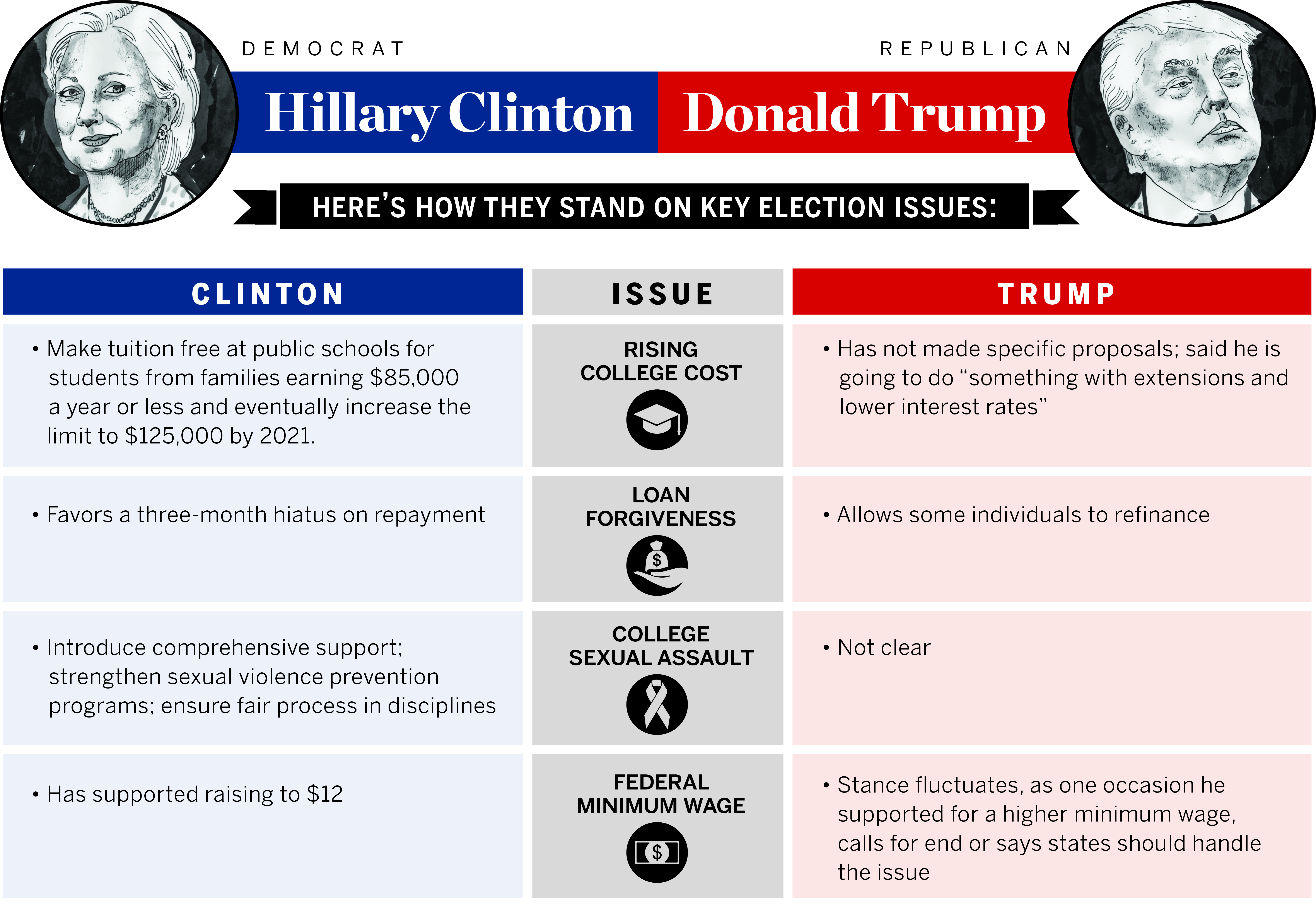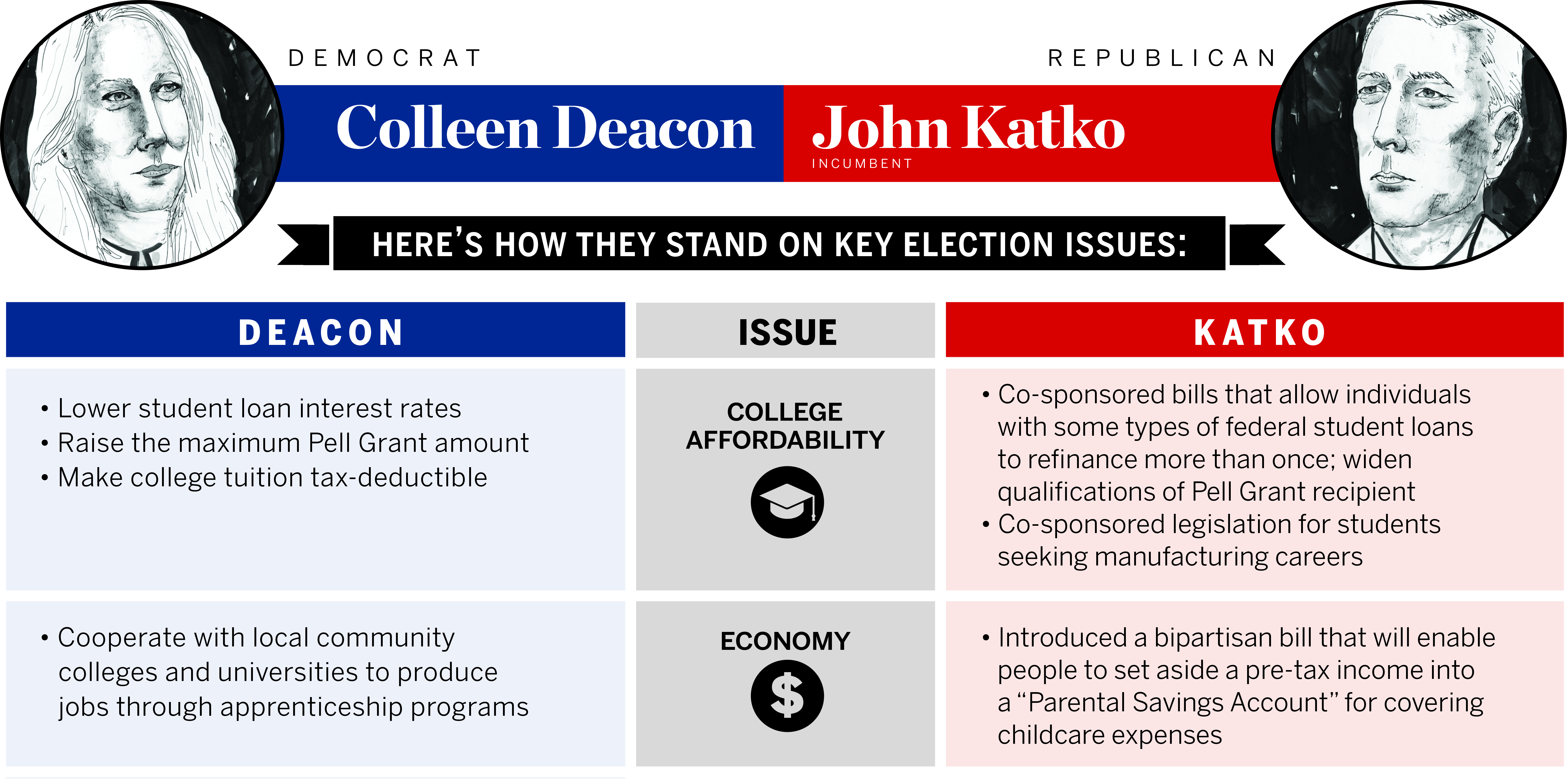Explaining the 2016 presidential and New York state elections
Clare Ramirez and Marisa Rother | The Daily Orange
Three sets of Democratic and Republican candidates will be going head-to-head in New York state on Election Day.
UPDATED: Oct. 16 at 10:29 p.m.
Presidential race outcome
In one of the largest political upsets in history, business mogul Donald Trump defeated former Secretary of State Hillary Clinton to win the presidential election. This outcome shocked analysts who predicted Clinton would handily defeat the boisterous and at-times controversial businessman.
Clinton, a Democrat, survived long, heated primaries against opponent Sen. Bernie Sanders, I-Vt. At a rally in New Hampshire in mid-July, Sanders finally endorsed Clinton, calling her “far and away the best candidate.”
Trump, a Republican, defeated numerous well-known party members, including Sen. Ted Cruz, R-Texas and former Florida Gov. Jeb Bush, during the primaries.
With a campaign slogan of “Make America Great Again,” Trump proposed tougher control regarding borders and illegal immigration — including a controversial call for a temporary ban on Muslims entering the United States — and promises to produce jobs. Trump named Indiana Gov. Mike Pence as his running mate in July.
Issues: Rising tuition and student loans
Daily Orange File Graphic
Clinton proposed free tuition at public colleges or universities for students from households earning $85,000 a year or less. That threshold would be increased to $125,000 by 2021.
Trump did not explain what he would do to tackle soaring college tuition and bloated student loans. But, he did criticize rising tuition and said, “We are gonna really look into that because we have to keep it down,” in an interview with FOX News. He suggested lower interest rates, extensions and “a lot of good things.”
During his campaign, the Republican nominee also said the best solution to deal with rising costs would be creating jobs. As far as student loans go, Trump said he would refinance for “people who have loans who literally can’t do anything.”
What Clinton and Trump said when they visited Syracuse
On April 1, 2016, Clinton visited Syracuse, making a brief stop at Varsity Pizza and speaking at the F Shed in the Central New York Regional Market. Clinton was the first presidential candidate from both the Democratic and the Republican parties to visit Syracuse to campaign for the election.
In her speech, Clinton expressed support for New York state Gov. Andrew Cuomo’s push to increase the minimum wage in New York to $15 per hour as well as equal pay. Toward the end of her speech, Clinton promised to work with Republicans and to compromise, but also to “stand her ground.”
On April 16, 2016, Trump held a rally at the Nicholas J. Pirro Convention Center and talked about his plan to improve the economy through trade deals, to secure the Mexican border and to unify the nation.
Trump’s speech was fluid, jumping from subject to subject without going deep in one topic. He said current leaders are incompetent and corrupt, adding that he would cut costs, bring back jobs and put Americans first.
U.S. Senate race outcome
Daily Orange File Graphic
In New York’s U.S. Senate race, incumbent Democrat Sen. Chuck Schumer easily overcame the challenge posed by Republican Wendy Long. Schumer carried about 70 percent of the vote.
To tackle rising college tuition, Schumer created the American Opportunity Tax Credit, providing a $2,500 tax credit per year.
When he visited Syracuse University in February, Schumer laid out the Reducing Educational Debt (RED) Act, a bill that would make the first two years of community college free. This bill would enable student loan borrowers to refinance at lower rates and increase the number of Pell Grants, which — unlike loans — do not have to be paid back.
Long, meanwhile, pledged to introduce a bill forcing colleges to reduce tuition due to the endowments they receive, or else they will lose federal support, such as federal tax credits.
U.S. House race outcome
Daily Orange File Graphic
Incumbent Republican Rep. John Katko defeated Colleen Deacon in the region’s U.S. House race.
Deacon, who worked as an aide to former Syracuse Mayor Matt Driscoll and Sen. Kirsten Gillibrand, D-N.Y., walked away with 40 percent of the vote. In May, she took a job as regional director of central New York for Cuomo.
On the issue of college affordability, Katko co-sponsored bills that allow individuals with some types of federal student loans to refinance more than once and widen qualifications for Pell Grant recipients. He has also co-sponsored legislation for students seeking manufacturing careers as an alternative to attending college.
In 2014, Katko asked NCAA President Mark Emmert to reconsider the sanctions imposed on SU.
Deacon’s plans include lowering student loan interest rates, raising the maximum Pell Grant amount and making college tuition tax-deductible.
The Daily Orange will continue to update this Explainer as new information about the 2016 presidential election and the 2016 New York state elections is released.
Published on July 10, 2016 at 1:12 pm
Contact Satoshi: ssugiyam@syr.edu | @SatoshiJournal








